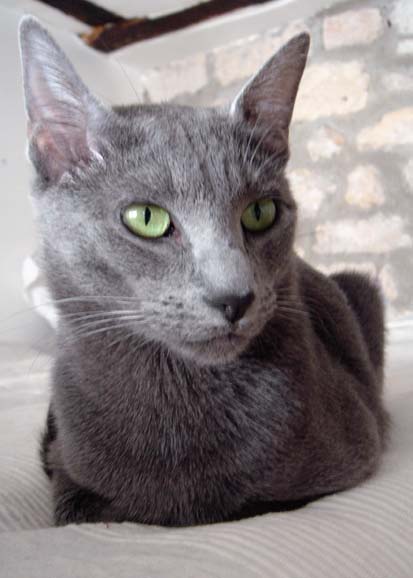Also known as Archangel cats, the Russian Blue originated near the Russian port of Arkangelsk on the White Sea, a mere 150 miles south of the Arctic Circle. So it made sense to call them Archangel cats simply because of where they came from, though they are an angelic little breed.
Because Arkangelsk was a port city, it was relatively easy for these cats to spread throughout Europe simply by boarding the ships that came through. They made excellent hunters, so were prized by shop captains for catching rats. The Russian Blue spread so quickly that the first cat show in England in 1880 included these stunning creatures.
Prior to 1912, all blue cats with short hair competed in the same class. But by the end of 1912 Russian Blues were granted their own class, but they were described as Foreign Blues, not Russian. There was some controversy over this, but World War I distracted everyone from cats, leaving the matter unsettled for years to come.
After the war, breeding slowly picked up where it had left off, but the war had taken a toll. The gene pool had severely diminished, forcing breeders to resort to outcrosses to revitalize the breed. Some breeders used the British Shorthair for its color, others the blue point Siamese for the more foreign body type. In Scandinavia, breeders decided on blue cats and Siamese cats. Their kittens had short, tight coats and bright emerald eyes.
By the time the Russian Blue was imported into the United States, there were quite a few versions to choose from. Most American breeders used English and Scandinavian cats, breeding for the best features of both. Through their concentrated efforts we were blessed with the modern Russian Blue, a cat with a pale blue coat tipped with silver who has eyes the shade of quality emeralds.
The Appearance of the Russian Blue
Medium in size, the Russian Blue is graceful and elegant. His body had a foreign appearance while being both athletic and muscular. Legs should be long and fine, ears large and set so they frame the face. The eyes are quite distinctive with their emerald green color, and they are noticeable as they are round and just a little large for the face.
The Russian Blue isn't a Russian Blue without the characteristic blue coat. The coat should be short and dense and tipped with silver. This silver gives the cat an impressive shimmer. It looks impressive, and it is, but it's also relatively low maintenance. A quick brushing once a week is all most Russian Blues ever need.
The Personality of the Russian Blue
Incredibly affectionate and quite intelligent, this quick witted breed likes to stalk and observe people before he comes out of hiding. He's not shy or scared, he just likes to set the terms of his affection.
Once he does approach, he will not leave you alone. He might be able to entertain himself while you're away, but when you're home, you're all his. If you have children or other pets, so much the better, because he loves everyone equally. Also, there will be more people to play fetch.
If you're looking for a stunning cat who will love you to eternity, and you're willing to play fetch for hours on end, the Russian Blue might be the cat for you.

No comments:
Post a Comment